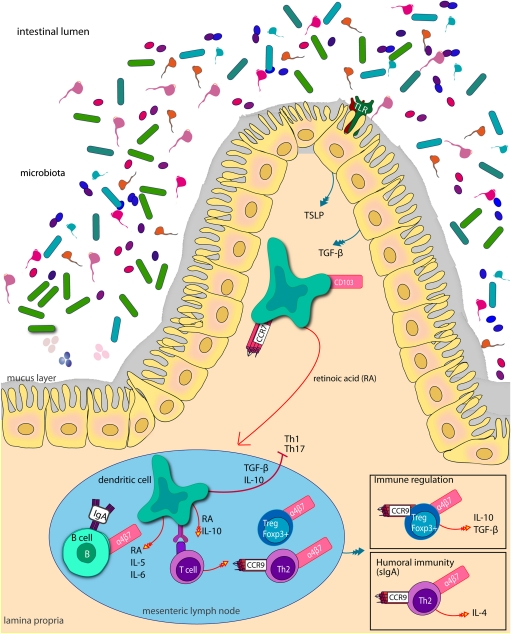Fig. 3.
Mucosal CD103+ DC are conditioned in the peripheral tissues by epithelial production of TSLP and TGF-β, which endows DC with the ability to prime noninflammatory responses and induce regulatory T cells. When they receive an inflammatory or danger signal, they begin to mature, and the expression of CCR7 increases allowing the DC to enter lymph vessels and migrate to the draining lymph nodes. In the T cell areas retinoic acid, the acid form of vitamin A plays an important role in the ability of DC to up-regulate homing receptors on lymphocytes. Retinoic acid (RA) is also an important cofactor for the differentiation of Foxp3+ Tregs and has been shown to inhibit the generation of Th17 cells.

